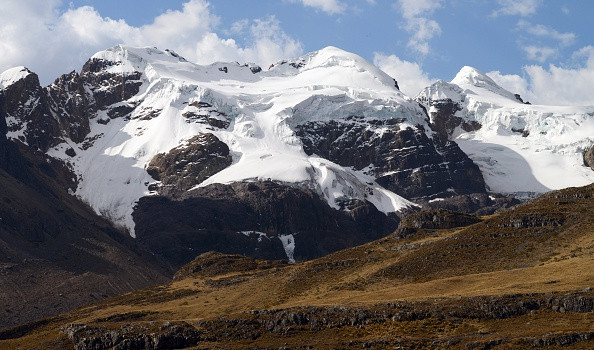Humans first colonised Peru's high mountains 7,000 years ago
Human remains and artefacts left at a site suggest permanent occupation as far back as 7,000 years ago.

Humans may have permanently colonised the highlands of Peru's Andean Mountains at least 7,000 years ago, new research suggests.
High-elevation environments above 2,500 metres are challenging for humans to settle in – they are hard to reach and can be uncomfortable for living. As such, these environments were among the planet's last frontiers of human colonisation and scientists have long tried to pierce the mystery of when humans began to occupy them.
Exactly when humans settled high up in the Andes, the world's largest mountain range, is in particular subject of a lot of debate.
In the past, theoretical research has argued that early Andean hunter-gatherers occupied these environments sometime after 9,000 years ago. This was backed up by archaeological evidence recovered at a number of sites, but the findings did not convince everyone.
In a study now published in Royal Society Open Science, researchers report on their work at a site called Soro Mik'aya Patjxa, which dates back to between 8,000 and 7,000 years ago. Located at an elevation of 3,800 metres in the Peruvian Andes, it offers a robust case study to independently test previous hypotheses for early permanent use of the region by humans.
Three different possible sites
The scientists explain that there are three options for how the site was used between 8,000 and 7,000 years ago. The first is that the site was only used by part of the community sent by the others to collect high-elevation resources. Soro Mik'aya Patjxa would thus have been a logistical camp accessed from a low-elevation base.
The second option is that the community seasonally moved between low- and high-elevation environments, depending on resource availability and weather patterns. Finally, it is also possible that the community already spent all of its time in high elevation and that Soro Mik'aya Patjxa was a camp part of an annual round situated almost entirely at high elevation.
The scientists conducted a number of experiments to find out which of these options was most likely. They looked at the remains of sixteen humans that had been discovered previously, analysing bone chemistry, and then studied geographical positioning of the site demographic composition of the population and provenance of the artefacts.
They identified low oxygen and high carbon isotope values in human bones. They also established that people would have had to travel long distances to reach low elevation zones. In addition, the artefacts were all made from local material. All this suggests that people would have been unlikely to move away from high-elevation areas.
Finally, the human population at the site appears to have been composed of men and women of all ages, contradicting the idea that only a small, homogeneous group would have been sent to gather resources in these environments while most people remained in the lowlands.
The evidence thus strongly suggests that the humans who spent some time at Soro Mik'aya Patjxa would have continuously inhabited the Andean highlands. Because the site is dated to between 8,000 and 7,000 years ago, this is the best support to date for permanent human occupation of the Andean highlands by hunter–gatherers at least 7,000 years ago - and after 9,000 years ago.
–
© Copyright IBTimes 2025. All rights reserved.






















